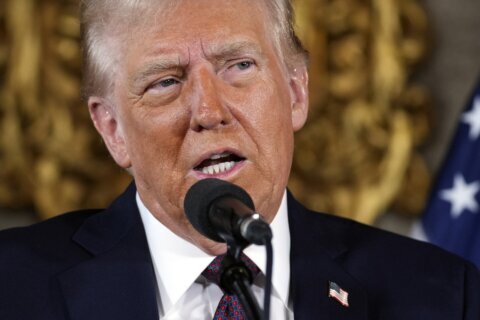There’s no sugarcoating it: Health care stocks trended downward for most of 2024, significantly underperforming broader stock indexes. Over the past year, the S&P 500 Health Care index rose by only 0.4%, compared with the S&P 500’s 25.8% return as of Jan. 7.
As September came to a close, health care stocks had returned about 12% in 2024. But from that point through mid-December, S&P 500 health care stocks plummeted in value as investors opted for growth stocks over more value-related portfolio plays.
2025 should prove to be a different story, as innovative drugs and low sector valuations are likely to boost health care stocks and funds in the new year. An aging population, with Generation X nearing retirement and baby boomers already in their golden years, should help boost health care spending and carry the industry forward in 2025.
[Sign up for stock news with our Invested newsletter.]
One key wrinkle is President-elect Donald Trump’s pick to head the U.S. Department of Health and Human Services, Robert F. Kennedy Jr. Trump’s pick has been a vocal critic of mainstay health care companies, especially in the prescription drug and immunization industries. If the HHS takes a more confrontational position against health care companies, that’s a wild card to be factored in for investors in the sector.
In the meantime, the first weeks of a new year are a good time to review several health care exchange-traded funds, or ETFs, for portfolio placement in 2025. Here are six of the best health care ETFs to buy now:
| Health Care ETF | Expense Ratio | 30-Day SEC Yield |
| iShares Global Healthcare ETF (ticker: IXJ) | 0.41% | 1.3% |
| Vanguard Health Care ETF (VHT) | 0.10% | 1.5% |
| Fidelity Select Health Care (FSPHX) | 0.65% | 0.0% |
| Health Care Select Sector SPDR ETF (XLV) | 0.09% | 1.7% |
| Invesco S&P 500 Equal Weight Health Care ETF (RSPH) | 0.40% | 0.8% |
| SPDR S&P Biotech ETF (XBI) | 0.35% | 0.0% |
iShares Global Healthcare ETF (IXJ)
This general health, medical device and biopharmaceutical-leaning ETF includes major sector names like Eli Lilly and Co. (LLY), Johnson & Johnson (JNJ) and UnitedHealth Group Inc. (UNH), which make up almost 20% of the fund.
The fund rose just 0.6% by market price in 2024, compared with its index category’s 2.7% return over the same timeframe. Year to date, the fund is up 1.4%.
The fund’s expense ratio is 0.41%, below its category’s average of 0.52%. The fund also offers a nice dividend yield of 1.3% and has $3.7 billion in assets under management.
IXJ has several features that should improve its fortunes going forward. The companies included in the fund have made big bets on artificial intelligence and robotics, two technologies on the rise in health care. Health care is also deemed a value sector, and industry analysts expect value stocks to outperform in 2025.
Closing at $87.19 on Jan. 7, IXJ has been assigned an analyst consensus price target of about $105 in the new year.
Vanguard Health Care ETF (VHT)
The Vanguard Health Care ETF has recently lost momentum, with net assets falling from $18.5 billion in late September to $16.6 billion in early January. When net assets fall, performance is almost always the culprit, and that’s the case with VHT and its paltry 2.9% gain over the past year.
Yet the fund also offers a decent 1.5% yield, and with a 0.1% expense ratio, it is one of the least expensive funds compared with its primary competitors.
The fund should benefit from a big sector spending spree currently underway, with health care seeing its biggest gains since 1990. Consumer spending on weight loss drugs is fueling part of that growth, though the massive wave of Americans hitting their 50s, 60s and 70s has also contributed to additional spending. Either way, it’s good news for funds like VHT.
Plus, with the fund loaded up with favorites like Eli Lilly, AbbVie Inc. (ABBV) and Merck & Co. (MRK), it seems primed to rebound in 2025.
Fidelity Select Health Care (FSPHX)
This Fidelity fund has a moderately stronger price growth story than its peers, with gains of 4.9% in 2024 and 2.5% year to date. The fund comes with a four-star Morningstar rating and has a decent 10-year compound annual growth rate of 8.4%.
The Fidelity fund is a tad expensive with a 0.65% expense ratio, and it offers a tiny trailing dividend yield of 0.02%. What the fund does offer, however, is a heavy load of biotech stocks like Eli Lilly and Regeneron Pharmaceuticals Inc. (REGN), which already outperformed in 2024 and should continue to do so in 2025, as soaring health care spending presumably benefits drug stocks in 2025.
FSPHX also leans heavily into the medical device technology side of the health care sector, with a healthy 9.9% allocation to Boston Scientific Corp. (BSX), which has returned 58.2% over the past year.
The fund also has time and experience on its side. FSPHX was launched in 1981, and the same fund manager, Edward Yoon, has managed it since 2008.
Health Care Select Sector SPDR ETF (XLV)
Yes, XLV’s return for 2024 was barely in positive territory, at 2.5%. Also, its 2019-to-2021 annual double-digit gains haven’t been repeated in the past three years. And yes, net assets have also slipped from $41.5 billion to $37.3 billion since September.
So it’s not a good look for one of the larger health care funds out there, right?
Not so fast. The fund does offer a healthy 1.7% SEC yield and a low 0.09% expense ratio. Plus, it offers solid defense against any market downturns in 2025, given its non-cyclical foundation and the fact that the health care sector should find firmer ground this year.
Philosophically, the fund takes direct aim at health care companies that are stable and solid, with reliable pricing and yield factors. That’s why you see industry stalwarts like LLY, UNH and JNJ at the top of its holdings (the three stocks make up about 28% of the fund as of Jan. 6). In fact, 57% of the fund is allocated to 10 stocks, all of which are familiar industry names.
The fund also reduces risk by diversifying its lineup among pharmaceuticals, health care services, and equipment and supplies stocks. Its fund strategy may be vanilla, but safety-minded investors won’t mind. Its 10-year annualized return by net asset value stands at 9%, against 6.6% for its category. With a decent dividend and a low cost of entry, XLV should be attractive for the long haul.
Invesco S&P 500 Equal Weight Health Care ETF (RSPH)
This Invesco health care ETF was also down on its luck in late 2024, with a 0.8% NAV loss and a three-year annualized gain of only 0.2%. For that performance, fund investors pay a relatively higher fee than the larger health care ETFs, at 0.4%, and get a relatively weaker yield (compared with XLV, VHT and IXJ, that is) of 0.8%.
Rolled out in 2006, when smart beta ETFs started breaking out, RSPH emphasizes stock picking as much as formulaic weighted indexes, a strategy the larger ETFs have long embraced.
That management strategy matters, as Invesco fund managers strive for more stocks and more diversification than the biggest players. For example, RSPH’s top 10 holdings account for roughly 17% of the fund, compared with the 57% position of the top 10 stocks in XLV.
RSPH closed at $29.98 on Jan. 7, and TipRanks’ canvassing of 63 investment analysts reveals a target price of $35.31, making the fund a moderately undervalued play for health care investors.
SPDR S&P Biotech ETF (XBI)
This SPDR fund tracks the performance of the S&P Biotechnology Select Industry Index, which primarily includes companies in the biotechnology segment of the S&P Total Market Index. XBI favors smaller and midsize biotech companies, which adds a higher element of risk to the fund.
XBI is another smart beta fund that uses savvy stock selection to optimize its portfolio’s equal-weighting strategy. While that tactic worked out fine in 2017 (+43.7%), 2019 (+32.6%) and 2020 (+48.3%), it didn’t come close to matching that performance in 2024, with only a 1% gain.
Still, the data show ample growth in the biotechnology market. According to Precedence Research, the worldwide biotech market is expected to have a compound annual growth rate of 11.5% through 2034, reaching $4.6 trillion. The report cites an aging public and increased health care spending over the next decade as catalysts.
More from U.S. News
10 Best Health Care Stocks to Buy for 2025
15 Best Dividend Stocks to Buy Now
7 Best Monthly Dividend Stocks to Buy Today
6 Best Health Care ETFs to Buy for 2025 originally appeared on usnews.com
Update 01/08/25: This story was previously published at an earlier date and has been updated with new information.







